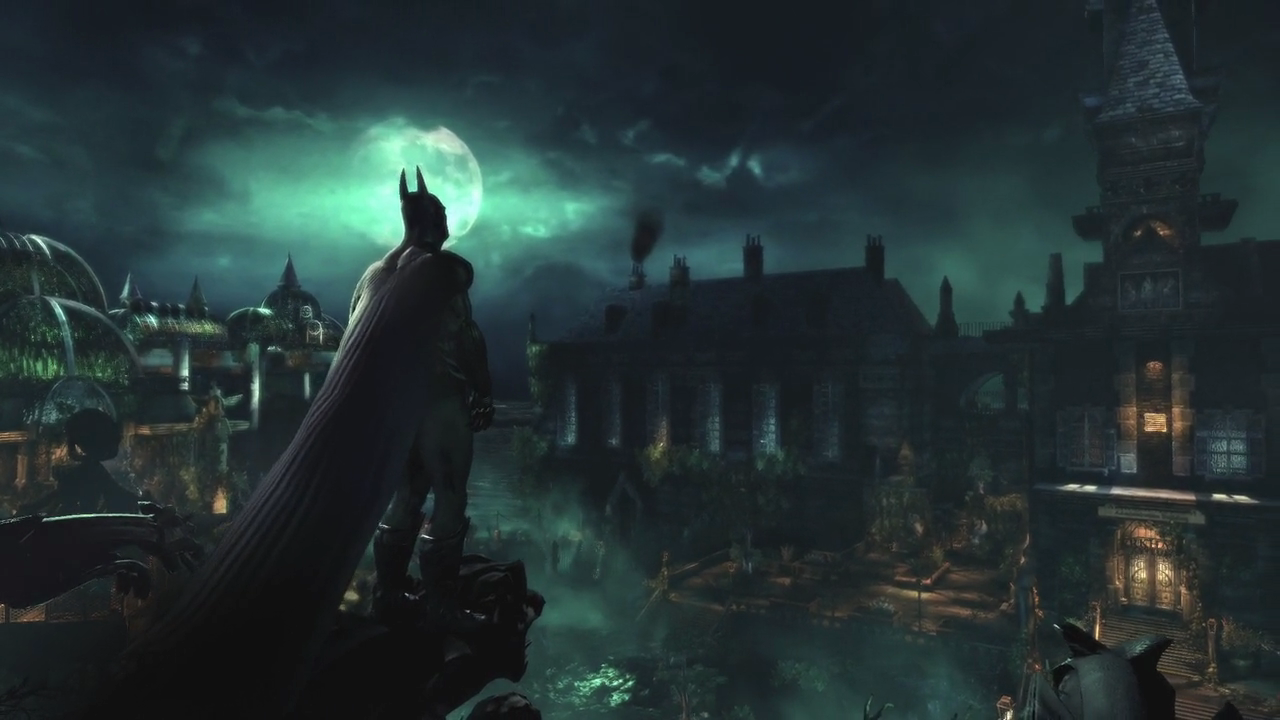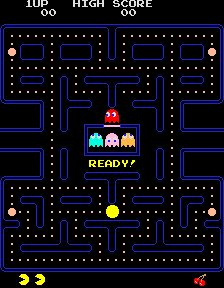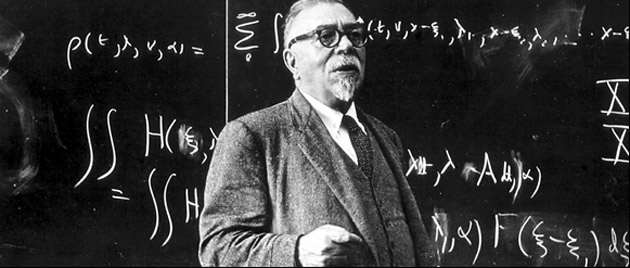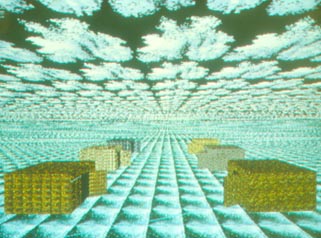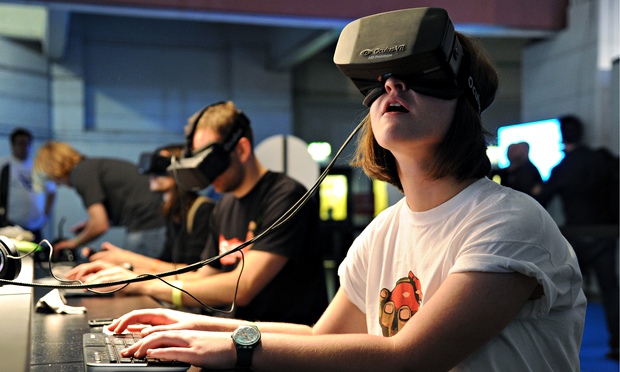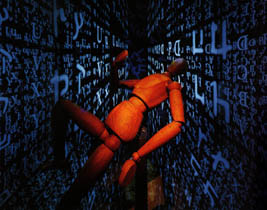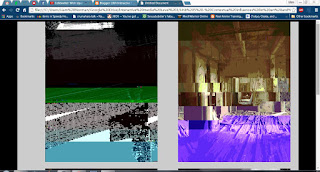Mind maps
For this week I had to make mind maps based on different types of -ISM's. For me to be able to do this I will need to first do research into several different types of -isms and choose 3 main one's that I can compare against each other and talk about how those -isms affect today's media styles.
Surrealism
For my first mind map I have decided to do surrealism, as it was the first-ism I had saw that I know a lot about. Surrealism is an '-ism' that stretches the of the laws and physics of this world and allows us to create art that explores the boundless imagination of human kind.
Artwork based on surrealism
This piece of work I had done was based off an pre-existing series of Warhammer 40,000. This design is based off of fantasy objects and lore from that series. The armour this character is wearing is made out of a mysterious 'Wraithbone' and soul gems, which do not exist in the real world, the armour does not match currently existing armour.
Films/Games influenced by Surrealism
https://mlpforums.com/uploads/monthly_08_2014/blogentry-23942-0-64080800-1407683227.jpg
Warhammer 40,000: Dawn of War 2
For my first example, I have chosen 'Dawn of War 2', as I know that it is a surreal game, due to it's races of Elves/Eldar, Orks, Chaos, Necron, Tau Empire and the Tyranids, which do not exist in the real world. The areas set within these stories are on non-existent planets. This game is influenced by surrealism, as it has a huge plot line based upon non existent or surreal events for example, the Eldar who are a race of elves who are far superior than any other race, due to their advanced technology, fast metabolism for greater agility and vision of time, which allow them to see things at a much faster pace. It is known for when humans fight the Eldar, they move a such a blinding speed that they are almost unstoppable. Humans are also seen as slow like creatures to the Eldar, This huge story has a massive interest to people who enjoy surrealism.
(Example)
(http://www.filmedge.net/Tron/downloads/TRON%20LEGACY%20One%20Sheet_10.19.10.jpg)
Tron: Legacy
'Tron: Legacy' is based upon the original Tron film, which came out 1982. The story itself is purely fictional and will probably not be possible in the real world, which makes it surreal. The story is based upon a man named Sam, who receives a message from his long lost father who suddenly disappeared with no trace of where he went what so ever. As the story progresses, it turns out that Sam's father had found a way into the virtual world, where programs are living entities with set personalities. Tron is also part of the futurism design movement, due to computers becoming the new age during 1980-2000 which had inspired for fictional futuristic ideas.
(example)
Futurism
For my second research topic, I chose futurism, as it is something that I am interested in. Futurism is an '-ism' that is based upon creating art that explores the concept of the future.
Artwork Based on futurism
This is my attempt at futurism art, based on what I believe the future will look like. Media I viewed during childhood may have had an effect on my view on the future, influences such as Akira, Timesplitters, dystopia(The idea and the half life 2 mod), REZ, Celldweller and AI film have what has driven my view of the future.
Films/Games influenced by Futurism
http://www.thegryphon.co.uk/wp-content/uploads/2014/12/Blade_Runner_6.jpg
Blade Runner (1982)
Blade Runner was a Sci-Fi action film depicted in the future, set in the year 2019 within a dystopian Los Angeles. During the 80's futuristic art was heavily inspired by flying cars and space travel, which expanded the Sci-fi genre in media. Blade Runner in itself became an icon and inspiration for futuristic Sci-Fi games and films, such as 'Deus Ex' and 'Ghost in a Shell'. Blade Runner story is a bout a special type of cop called a 'Blade Runner' who's task is to hunt down "replicants" who attempt to return to earth and break the law, as they are prohibited from returning to earth.
http://www.technobuffalo.com/wp-content/uploads/2014/03/REZ-HD.jpg
REZ (2001)
REZ is a video game created on the dreamcast and then later added to the 'Playstation 1' in 2002. REZ's story is based in a futuristic supercomputer that is monitored by a AI whose name is Eden. The player plays as a hacker who fights viruses and bugs within the computer system in order to find the location of this AI's Core in an attempt to repair it, as objects are destroyed, they produce sound chymes, which goes alongside the games music. It is said in REZ's end game credits that the game was inspired by Wassily Kandinsky, whom was a expressionist and also created abstract art.
Pointillism
For my third research topic, I chose to look at pointillism, as it's an art style that looks very interesting. Pointillism is a art movement that is based on a unique technique, which the painter uses small dots painted closely together in order to create the illusion of an image.
Films/game inspired by Pointillism
https://www.youtube.com/watch?v=tKMhcS4FxNY
A light in Chorus
A light in Chorus is a game that's based up of small dots of light that are put together to give us the illusion of an image, just like the art style, but this takes a new turn to the style as the artist to this game wanted each point to display a source of light to make objects look more vibrant and colourful to view. There is not much information about the game other than it is still in development at: http://www.alightinchorus.com/
Cubism
I chose this art movement as my fourth research task, as I would like to learn more about it. Cubism is a form that looks at real life objects, breaks them down and then recreate the in a abstract way. Cubism is said to be the most influenced movement within the 20th century.
Films/Games inspired by Cubism
(http://upload.wikimedia.org/wikipedia/commons/f/fc/Fez_%28video_game%29_cover_art.png)
Fez is an cubism indie game that came out for the xbox 360 and then later for other consoles. Fez's plot line dipicts a character who lives in a 2D world who one day realizes that the world is actually 3D. The game was created to allow for the player to shift between two sides of the 3D world allowing for the user to complete challenges which would seem impossible if this was not implemented.
(https://www.youtube.com/watch?v=tfpKTclOnfI)
Expressionism
I chose expressionism as my fifth piece of research. Expressionism is a style, which is create in order to express the creators mood on his feelings, this is done to allow for more ideas to generate from other people in order to create their expressions.
Films/Games inspired by Expressionism
http://upload.wikimedia.org/wikipedia/it/f/fb/Batman_Arkham_Asylum_-_Trailer.png
Batman Arkham asylum
The Batman series has been considered expressionist, as the use of dark colours, villain plots, dramatic turn of events that give the viewer certain emotions towards characters, especially in Tim Burton's batman films. Two face, who was originally a good character, came under a unfortunate turn of events, which led to his demise into an evil character, whom based peoples lives on chance of flipping a coin. His name 'Two Face' is based upon the accident to where half of his face has been burned off. His name also has relation to the two sides of a coin.
Films/Games inspired by minimalism
http://upload.wikimedia.org/wikipedia/en/5/59/Pac-man.png
Pac-Man
Pac-Man follows the simple minimalistic design for a video game, as it doesn't use that many colours or amount of detail to show itself to the viewer.
https://www.youtube.com/watch?v=n9adZ0HRuo4
Dexter intro inspired by Saul Bass
Saul Bass is well know for it's minimalistic design, as so that it is replicated even today. Saul bass design features 1 or 2 colours to display entities and characters against a minimal background in order to display something in a simplistic design.
Task 5
Interactive design research
Caveman paintings (15,000BC)
(http://matadornetwork.com/wp-content/uploads/2011/05/informationtech-cavepainting.jpg)
Ever since the dawn of man, humans have had the aspirations to create art in many different forms. Art has been a part of history since pre-historic times, with visual evidence being left in caves around the world. With the rise of civilisation and the advances in art brings us a new form, interactive art.
Norbert Weiner - Cybernetics (1948)
(http://www.norbertwiener.umd.edu/NW/photos/wiredNW.jpg)
Norbert Wiener was that man who defined the term "Cybernetics". The term means information that is passed from man to machine and vice versa. These terms have been seen in many sci-fi films such as Blade Runner, AI and I robot. This was the breakthrough that lead the way for future expansion into technological advances. Norbert believed that his research and his theory would lead to the improvement of our society and humans in general.
Roy Ascott - Cybernetic Vision (1966)
(http://athensartresidency.org/wp-content/uploads/2015/01/roy-ascott-web.jpg)
"If the cybernetic spirit constitutes the predominant attitude of the modern era, the computer is the supreme tool that its technology has produced. Used in conjunction with synthetic materials it can be expected to open up paths of radical change and invention in art." - Roy Ascott
Roy Ascott believed in the usage of computer technology, which could change the way art is formed altogether. This formed certain characteristics in many art forms, such as, Surrealism, pop art and Dada. Ascott was so inspired by what Computer technology could bring, he created a framework for approaching interactive artworks. In a thesis Ascott participated in in 1966, he said that this art style will need to break away from modern ideals of "Perfect objects", he proposed responses from viewer rather than the traditional static image.
Nam June Paik - Cybernated Art (1967)
(http://assets2.thecreatorsproject.com/content-images/contentimage/no-slug/eca4c03f5d6af0acf517d38275c62a3c.jpg)
Douglus Engelbart - Augmentation (1968)
(http://www.sri.com/sites/default/files/uploads/douglas-engelbart-at-sri-8-oct-68-demo-rehearsal.jpg)
"Our goal of augmenting the human intellect... will exhibit more of what can be called intelligence than an unaided human could... by organizing his intellectual capabilities into higher levels of synergistic structuring." - Douglus Engelbart
Douglus Engelbart is said to be one of the most most influential people in the history of personal computers. Engelbart led project funded by ARPA (Advanced Research Project Agency), which went on create the Mouse, windows, E-mails and the word processor. Engelbart lead projects which went onto influencing the first personal computer in the early 1970's.
Ivan Sutherland - Ultimate Display(1970)
(http://amturing.acm.org/images/sutherland-3.jpg)
In 1965 Sutherland wrote 'The Ultimate Display', whilst doing initial research into technology with immersive properties. Sutherland began making advances towards virtual worlds by finalizing designs, construction and navigation. He made predictions towards when he believed that these things could be possible, due to advances in technology. Although his ideal were designed and theroised before the release of the personal computer, he sought out to make sure that his idea of virtual worlds could be possible through a helmet product that visually stimulates the 3D environment. This research becomes very important for the inspiration towards the Oculus rift in 2012.
Myron Krueger - Responsive (1970)
(http://www.inventinginteractive.com/wp-content/uploads/2010/03/videoplace_02.jpg)
Myron Krueger became the pioneer towards human to computer interactivity within the real world's enviorment. Although originally a computer scientist, in 1966 Myron Krueger collaborated with artists and engineer in order to create art work that responded to human movement. This was possible through a series of sensors, such as, video cameras and graphics tables. Krueger's contribution to the interactive art movement allowed for "Composed" environments. This allowed for computers to respond to human movements and manipulate them.
William Gibson - Cyberspace (1984)
(http://www.cbc.ca/books/canadareads/gibsonpattern-360.jpg)
William gibson was very well known for his science fiction novels, such as, Burning Chrome and Nueromancer, which lead the way to the discovery of a new word that William describes, as "Cyberspace". His work always had stories that always connected man and machine together into a virtual highway of endless possibilities. Because of this, his writings had unspeakable influence on Scientists, researchers, theorists and artists. Gibson ideals of computer networks where people can live without a name had ironically come somewhat real in modern life today.
Jenny Holzer - Virtual Worlds (1993)
(http://www.w2vr.com/timeline/31_Bosnia.jpg)
On 1993 Jenny Holzer held an exhibition on 'Virtual Reality: An Emerging Medium', on which featured two worlds created by Holzer. The first world featured souls that would flee the user and then return to engage them. if you could catch them it is said that they would say Holzer's trademark truism phrases. The second world on the other hand, featured a dark story of the history of violence against women during the Bosnian war. The story was built on a desert like area with cinderblock huts and each hut had a different voice and a different story to tell.
Pierre Lévy - Collective Intelligence (1994)
(http://nepo.com.br/wp-content/uploads/2011/08/IMG_5808.jpg)
Very much like William Gibson and yet inspired by him, Pierre Lévy had ideals for what cyberspace could be, as written in 'Collective Intelligence: Mankind's Emerging World of Cyberspace'. Lévy work aims towards a Utopian universe, where everything is virtual; information, telematic interaction, mutable identity where there is and endless stream towards content and evolving forms towards art and communication. Lévy believes that virtual worlds has a constant and continuous expansion of art that's always changing and always being worked on. Lévy believes and envision a collective society that is bound and brought together and linked through a electronic networks. Lévy also believes that multimedia will be the catalyst for future social evolution.
Jodi - Beyond interface (1995)
(http://www.w2vr.com/timeline/35_Jodi.jpg)
Jodi Believed that internet art has become the next step for experimental forms of art for artists. They have a website called www.Jodi.org, which changes every time you click on the link. The link feature very surreal like fragments of code and other things upon them. When I went upon these pages I felt a sense of abandonment or some sort of dystopian feeling towards what I could see. I had tried the link several times to receive a different page every time that had ways of being different. This collection of interactive art pieces really capture peoples ideal during the 1990's. By looking at the Jodi website we can think to ourselves about how we use code and interface in order to allow people to understand. Unlike Jodi where the interface has been stripped bare and has left nothing but lost questions and hallucinogenic art in code.
Palmer Lucky - Occulus Rift (2012)
(http://static.guim.co.uk/sys-images/Guardian/Pix/pictures/2014/3/29/1396098221819/The-Oculus-Rift-headset-i-010.jpg)
With the improvement of technology, so improves the advances toward interactive art and how we perceive it as humans. The Occulus Rift, which was proposed in 2012 has made some pretty astounding feats to where people believe this will be the future of virtual reality and video games. Although still unreleased, many big companies want to back the Occulus, such as, Microsoft and Facebook. This is due to it's inspiring potential for the future, many people believes it hold the key to the next step.
Becoming Virtual (Future)
(http://www.w2vr.com/timeline/36_Cave.jpg)
As humans, we will not understand what it will be like to be inside virtual space until we experience it ourselves. We no longer view objects as we ourselves are the object and have to take on new landscapes and existence within virtuality. Topics like this can become controversial towards certain religious group, as they could see it as "Playing as god" or "Tempering with forbidden knowledge", which would unlock the next step into human history.
Below are some road maps I had found of future advances on the human species that could effect our progress within the art form.




Source:
(http://imgur.com/gallery/HjF2P)
This video below is something similar to what I want to create, but from my aspect, I would like to have images on a webpage that requires user interaction in order to make the image change.
For my idea I had came up with the idea of collecting old famous paintings like 'The Mona Lisa' and creating a supernatural/horror type edit to them. The interactivity will feature users clicking on the original image and it will slowly transition into the horror version, I may add intense horror noises in the background to make the portrait even more powerful.
I had expressed my idea to another person and they had suggested that to make this work that I create the edits within Photoshop and put them through scratch game maker in order to make this possible.
Unfortunately after trial and error I have found that scratch would not work as the quality of the images put onto scratch would downgrade by a huge amount, destroying the feel within the image. I considered options for what I could've done and after my personal experience with HTML and CSS in Unit 70 - Computer story development, I decided to create my idea within a HTML file. Using code from the previous project I was able to create a template HTML file that would hold the images. I had put together the idea of two by two images that would fit the page for the end user.
After finishing the website and revisiting the research I became heavily inspired by it, so I had created a second project connected to the first. This time I wanted the subject of the images to be based around cybernetic/futuristic art form and I know that a certain popular one is 'Glitch Art'. Using http://snorpey.github.io/jpg-glitch/ I was able to create these glitch images and compile them together to create GIF animations. For my first image I had thought of using an image of myself as a test to see how this would come out and I believe it came out just the way I wanted it.
Below is a frame by frame image showing the transitions. By using the website I mentioned before I was able to distort the image and then I saved six of them, which I imported into Photoshop for animating.


Photoshop has a 'Timeline' tool, which is helpful for animating as it allows me to edit each individual frame, whilst still being able to edit the image to my choosing. I had done this for four images all with their own 'hover over' images.
Futuristic / Cyberpunk Glitch Art
I had chosen pictures near random, but have some relevance towards Cyberpunk, as the first gif is myself, as I enjoy Cyberpunk art, for the second image it shows a run down building, which is common in most cyberpunk stories, for the third image I had chosen a underground sewer tunnel, as a place for escape from the real world, as setting like this take place in cyberpunk stories, for my last image I had chosen to get a image of an woman, who almost looks immortal, but changed by technology.
Design report
For the brief, I was tasked with doing various research on art movements and media relating to that movement, research into the history of interactive art and then finally creating my own interactive art inspired from that research. In order for me to show my understanding, I chose to create several different mind maps detailing things about that movement and then providing created media related to it. I also provided my own work that were based around the movements that I had done before. This allowed me to understand how to take on the next steps of the unit.
When tasking to do the research I had put my pre-existing knowledge into each mind map and then do additional research in order to show a broader understanding. Before doing this unit I had very little knowledge on each individual "-Ism" and this had allowed me to learn new things about art and help me progress further within the unit.
My initial idea for the interactive art came from pre-existing films and video games that had incorporated moving paintings, such as, Luigi's Mansion and shutter. I had attempted to create these ideas in scratch programming application, but have found it to down scale my images to a lower resolution, so that they became near to unrecognisable, which made me move away from scratch and onto HTML + CSS, as I had knowledge on how to code from previous units. I had felt really inspired by how well I managed to present my images with working interaction that I ended up making four images for two projects. I had got the idea for the second project from my initial research of futuristic technology concerning interactive art. After presenting my final design towards other people I have found that improvements can be made in several parts across my idea. I have found that people who had looked at my art, do agree that my second project is a lot stronger, due to the amount of research I have done towards art of that particular style.
If I were to do this assignment again, I believe I would invest more time into the research and development stages, as those parts I consider to be weaker than my final design. I would make sure to have a range of ideas that had reasonable way to be created and realistically be achieved throughout the time in get given. I believe that my work, both research and development up to the final design, is achievable of a merit of higher grade, due to the amount of consideration and detail I put into the design process.
http://www.thegryphon.co.uk/wp-content/uploads/2014/12/Blade_Runner_6.jpg
Blade Runner (1982)
Blade Runner was a Sci-Fi action film depicted in the future, set in the year 2019 within a dystopian Los Angeles. During the 80's futuristic art was heavily inspired by flying cars and space travel, which expanded the Sci-fi genre in media. Blade Runner in itself became an icon and inspiration for futuristic Sci-Fi games and films, such as 'Deus Ex' and 'Ghost in a Shell'. Blade Runner story is a bout a special type of cop called a 'Blade Runner' who's task is to hunt down "replicants" who attempt to return to earth and break the law, as they are prohibited from returning to earth.
http://www.technobuffalo.com/wp-content/uploads/2014/03/REZ-HD.jpg
REZ (2001)
REZ is a video game created on the dreamcast and then later added to the 'Playstation 1' in 2002. REZ's story is based in a futuristic supercomputer that is monitored by a AI whose name is Eden. The player plays as a hacker who fights viruses and bugs within the computer system in order to find the location of this AI's Core in an attempt to repair it, as objects are destroyed, they produce sound chymes, which goes alongside the games music. It is said in REZ's end game credits that the game was inspired by Wassily Kandinsky, whom was a expressionist and also created abstract art.
https://prezi.com/kikbtw4cmr1d/futurism/#
For my third research topic, I chose to look at pointillism, as it's an art style that looks very interesting. Pointillism is a art movement that is based on a unique technique, which the painter uses small dots painted closely together in order to create the illusion of an image.
My own artwork based on Pointillism
In my attempt to do pointillism art, I had created a tree made out of small dots and a apple with a leaf, in an attempt to follow in the style of pointillism.
A light in Chorus
A light in Chorus is a game that's based up of small dots of light that are put together to give us the illusion of an image, just like the art style, but this takes a new turn to the style as the artist to this game wanted each point to display a source of light to make objects look more vibrant and colourful to view. There is not much information about the game other than it is still in development at: http://www.alightinchorus.com/
Cubism
I chose this art movement as my fourth research task, as I would like to learn more about it. Cubism is a form that looks at real life objects, breaks them down and then recreate the in a abstract way. Cubism is said to be the most influenced movement within the 20th century.
Films/Games inspired by Cubism
(http://upload.wikimedia.org/wikipedia/commons/f/fc/Fez_%28video_game%29_cover_art.png)
Fez is an cubism indie game that came out for the xbox 360 and then later for other consoles. Fez's plot line dipicts a character who lives in a 2D world who one day realizes that the world is actually 3D. The game was created to allow for the player to shift between two sides of the 3D world allowing for the user to complete challenges which would seem impossible if this was not implemented.
Expressionism
I chose expressionism as my fifth piece of research. Expressionism is a style, which is create in order to express the creators mood on his feelings, this is done to allow for more ideas to generate from other people in order to create their expressions.
Films/Games inspired by Expressionism
http://upload.wikimedia.org/wikipedia/it/f/fb/Batman_Arkham_Asylum_-_Trailer.png
Batman Arkham asylum
The Batman series has been considered expressionist, as the use of dark colours, villain plots, dramatic turn of events that give the viewer certain emotions towards characters, especially in Tim Burton's batman films. Two face, who was originally a good character, came under a unfortunate turn of events, which led to his demise into an evil character, whom based peoples lives on chance of flipping a coin. His name 'Two Face' is based upon the accident to where half of his face has been burned off. His name also has relation to the two sides of a coin.
https://monochromagame.files.wordpress.com/2013/11/edward-scissorhands.jpg
Edward Scissorhands
Edward scissorhand is considered to be part of the expressionist art style, due to it's dark use of colours, it's evil looking character and urban setting. Edward's design is meant for the viewer to have a disliking to him at first before watching the film and then after watching his emotions and expressions to others, the viewer then begins to understand him and start to feel different emotions for him.
Minimalism
This is the sixth piece of research into the movement art. Minimalism is an art style that requires the creator to create art into its basic form.Films/Games inspired by minimalism
http://upload.wikimedia.org/wikipedia/en/5/59/Pac-man.png
Pac-Man
Pac-Man follows the simple minimalistic design for a video game, as it doesn't use that many colours or amount of detail to show itself to the viewer.
Dexter intro inspired by Saul Bass
Saul Bass is well know for it's minimalistic design, as so that it is replicated even today. Saul bass design features 1 or 2 colours to display entities and characters against a minimal background in order to display something in a simplistic design.
My attempt of saul bass design
Minimalism is a movement where simplicity is favoured over detail. This art style is most famous from artists such as, Saul Bass, who recreated film posters and openings to, which revolutionised the film world during 1949 - 1989. In my designs above, I had attempted to follow closely to the saul bass design style, which can be found in Unit 3 - Ideas and Concepts. This piece of work is an example of saul bass because of the shown research that I had put in to finding out what Saul Bass style is during Unit 3, there are similarities to the style. To design a new Saul Bass design I would have to review all of my research currently done and then create a new design using that research.Task 5
Interactive design research
Caveman paintings (15,000BC)
(http://matadornetwork.com/wp-content/uploads/2011/05/informationtech-cavepainting.jpg)
Ever since the dawn of man, humans have had the aspirations to create art in many different forms. Art has been a part of history since pre-historic times, with visual evidence being left in caves around the world. With the rise of civilisation and the advances in art brings us a new form, interactive art.
Norbert Weiner - Cybernetics (1948)
(http://www.norbertwiener.umd.edu/NW/photos/wiredNW.jpg)
Norbert Wiener was that man who defined the term "Cybernetics". The term means information that is passed from man to machine and vice versa. These terms have been seen in many sci-fi films such as Blade Runner, AI and I robot. This was the breakthrough that lead the way for future expansion into technological advances. Norbert believed that his research and his theory would lead to the improvement of our society and humans in general.
Roy Ascott - Cybernetic Vision (1966)
(http://athensartresidency.org/wp-content/uploads/2015/01/roy-ascott-web.jpg)
"If the cybernetic spirit constitutes the predominant attitude of the modern era, the computer is the supreme tool that its technology has produced. Used in conjunction with synthetic materials it can be expected to open up paths of radical change and invention in art." - Roy Ascott
Roy Ascott believed in the usage of computer technology, which could change the way art is formed altogether. This formed certain characteristics in many art forms, such as, Surrealism, pop art and Dada. Ascott was so inspired by what Computer technology could bring, he created a framework for approaching interactive artworks. In a thesis Ascott participated in in 1966, he said that this art style will need to break away from modern ideals of "Perfect objects", he proposed responses from viewer rather than the traditional static image.
Nam June Paik - Cybernated Art (1967)
(http://assets2.thecreatorsproject.com/content-images/contentimage/no-slug/eca4c03f5d6af0acf517d38275c62a3c.jpg)
Nam June Paik was a man who like to combine art with technology to create a cyber like art form, he is often thought of, as the founding father of video art. Paik is well know for his Electronic
 |
| (https://upload.wikimedia.org/wikipedia /en/3/30/Portrait_of_Nam_June_Paik-by_Lim_Young-kyun- 1981.jpg) |
superhighway piece in 1995. Paik's idea behind this was what he thought was America's obsession of television, moving images and shiny things. He believed that humans as a whole should embrace technology and art together.
Douglus Engelbart - Augmentation (1968)
(http://www.sri.com/sites/default/files/uploads/douglas-engelbart-at-sri-8-oct-68-demo-rehearsal.jpg)
Douglus Engelbart is said to be one of the most most influential people in the history of personal computers. Engelbart led project funded by ARPA (Advanced Research Project Agency), which went on create the Mouse, windows, E-mails and the word processor. Engelbart lead projects which went onto influencing the first personal computer in the early 1970's.
Ivan Sutherland - Ultimate Display(1970)
(http://amturing.acm.org/images/sutherland-3.jpg)
In 1965 Sutherland wrote 'The Ultimate Display', whilst doing initial research into technology with immersive properties. Sutherland began making advances towards virtual worlds by finalizing designs, construction and navigation. He made predictions towards when he believed that these things could be possible, due to advances in technology. Although his ideal were designed and theroised before the release of the personal computer, he sought out to make sure that his idea of virtual worlds could be possible through a helmet product that visually stimulates the 3D environment. This research becomes very important for the inspiration towards the Oculus rift in 2012.
Myron Krueger - Responsive (1970)
(http://www.inventinginteractive.com/wp-content/uploads/2010/03/videoplace_02.jpg)
Myron Krueger became the pioneer towards human to computer interactivity within the real world's enviorment. Although originally a computer scientist, in 1966 Myron Krueger collaborated with artists and engineer in order to create art work that responded to human movement. This was possible through a series of sensors, such as, video cameras and graphics tables. Krueger's contribution to the interactive art movement allowed for "Composed" environments. This allowed for computers to respond to human movements and manipulate them.
William Gibson - Cyberspace (1984)
(http://www.cbc.ca/books/canadareads/gibsonpattern-360.jpg)
William gibson was very well known for his science fiction novels, such as, Burning Chrome and Nueromancer, which lead the way to the discovery of a new word that William describes, as "Cyberspace". His work always had stories that always connected man and machine together into a virtual highway of endless possibilities. Because of this, his writings had unspeakable influence on Scientists, researchers, theorists and artists. Gibson ideals of computer networks where people can live without a name had ironically come somewhat real in modern life today.
Jenny Holzer - Virtual Worlds (1993)
(http://www.w2vr.com/timeline/31_Bosnia.jpg)
On 1993 Jenny Holzer held an exhibition on 'Virtual Reality: An Emerging Medium', on which featured two worlds created by Holzer. The first world featured souls that would flee the user and then return to engage them. if you could catch them it is said that they would say Holzer's trademark truism phrases. The second world on the other hand, featured a dark story of the history of violence against women during the Bosnian war. The story was built on a desert like area with cinderblock huts and each hut had a different voice and a different story to tell.
Pierre Lévy - Collective Intelligence (1994)
(http://nepo.com.br/wp-content/uploads/2011/08/IMG_5808.jpg)
Very much like William Gibson and yet inspired by him, Pierre Lévy had ideals for what cyberspace could be, as written in 'Collective Intelligence: Mankind's Emerging World of Cyberspace'. Lévy work aims towards a Utopian universe, where everything is virtual; information, telematic interaction, mutable identity where there is and endless stream towards content and evolving forms towards art and communication. Lévy believes that virtual worlds has a constant and continuous expansion of art that's always changing and always being worked on. Lévy believes and envision a collective society that is bound and brought together and linked through a electronic networks. Lévy also believes that multimedia will be the catalyst for future social evolution.
Jodi - Beyond interface (1995)
(http://www.w2vr.com/timeline/35_Jodi.jpg)
Jodi Believed that internet art has become the next step for experimental forms of art for artists. They have a website called www.Jodi.org, which changes every time you click on the link. The link feature very surreal like fragments of code and other things upon them. When I went upon these pages I felt a sense of abandonment or some sort of dystopian feeling towards what I could see. I had tried the link several times to receive a different page every time that had ways of being different. This collection of interactive art pieces really capture peoples ideal during the 1990's. By looking at the Jodi website we can think to ourselves about how we use code and interface in order to allow people to understand. Unlike Jodi where the interface has been stripped bare and has left nothing but lost questions and hallucinogenic art in code.
Palmer Lucky - Occulus Rift (2012)
(http://static.guim.co.uk/sys-images/Guardian/Pix/pictures/2014/3/29/1396098221819/The-Oculus-Rift-headset-i-010.jpg)
With the improvement of technology, so improves the advances toward interactive art and how we perceive it as humans. The Occulus Rift, which was proposed in 2012 has made some pretty astounding feats to where people believe this will be the future of virtual reality and video games. Although still unreleased, many big companies want to back the Occulus, such as, Microsoft and Facebook. This is due to it's inspiring potential for the future, many people believes it hold the key to the next step.
Becoming Virtual (Future)
(http://www.w2vr.com/timeline/36_Cave.jpg)
As humans, we will not understand what it will be like to be inside virtual space until we experience it ourselves. We no longer view objects as we ourselves are the object and have to take on new landscapes and existence within virtuality. Topics like this can become controversial towards certain religious group, as they could see it as "Playing as god" or "Tempering with forbidden knowledge", which would unlock the next step into human history.
Below are some road maps I had found of future advances on the human species that could effect our progress within the art form.




Source:
(http://imgur.com/gallery/HjF2P)
This video below is something similar to what I want to create, but from my aspect, I would like to have images on a webpage that requires user interaction in order to make the image change.
Haunted painting comes to life from AtmosFEARfx. #yikes
Posted by The Replica Prop Forum on Sunday, 3 May 2015
For my idea I had came up with the idea of collecting old famous paintings like 'The Mona Lisa' and creating a supernatural/horror type edit to them. The interactivity will feature users clicking on the original image and it will slowly transition into the horror version, I may add intense horror noises in the background to make the portrait even more powerful.
I had expressed my idea to another person and they had suggested that to make this work that I create the edits within Photoshop and put them through scratch game maker in order to make this possible.
Unfortunately after trial and error I have found that scratch would not work as the quality of the images put onto scratch would downgrade by a huge amount, destroying the feel within the image. I considered options for what I could've done and after my personal experience with HTML and CSS in Unit 70 - Computer story development, I decided to create my idea within a HTML file. Using code from the previous project I was able to create a template HTML file that would hold the images. I had put together the idea of two by two images that would fit the page for the end user.
 |
| Coding for my website, which included HTML and CSS. |
After finishing the website and revisiting the research I became heavily inspired by it, so I had created a second project connected to the first. This time I wanted the subject of the images to be based around cybernetic/futuristic art form and I know that a certain popular one is 'Glitch Art'. Using http://snorpey.github.io/jpg-glitch/ I was able to create these glitch images and compile them together to create GIF animations. For my first image I had thought of using an image of myself as a test to see how this would come out and I believe it came out just the way I wanted it.
Below is a frame by frame image showing the transitions. By using the website I mentioned before I was able to distort the image and then I saved six of them, which I imported into Photoshop for animating.


Photoshop has a 'Timeline' tool, which is helpful for animating as it allows me to edit each individual frame, whilst still being able to edit the image to my choosing. I had done this for four images all with their own 'hover over' images.
Supernatural Website
For my four images I had chosen: Mona Lisa, Bloody Mary, Henry VII and Napoleon. I had chosen these people, as they are some important people of past history.
Futuristic / Cyberpunk Glitch Art
I had chosen pictures near random, but have some relevance towards Cyberpunk, as the first gif is myself, as I enjoy Cyberpunk art, for the second image it shows a run down building, which is common in most cyberpunk stories, for the third image I had chosen a underground sewer tunnel, as a place for escape from the real world, as setting like this take place in cyberpunk stories, for my last image I had chosen to get a image of an woman, who almost looks immortal, but changed by technology.
First review of my interactive art projects.
I had got Mario and Rui to also review my interactive art in order to get three different opinions on my interactive work. I have found that improvements can be made towards my interactive art in terms of user compatiblity as the gifs on the seconde page had struggled to load on the college Mac computers.
Interactive art website ZIP:
https://drive.google.com/file/d/0B2HrTGt9DLh4OGlVYWlQTzJ6WlE/view?usp=sharing
Design report
For the brief, I was tasked with doing various research on art movements and media relating to that movement, research into the history of interactive art and then finally creating my own interactive art inspired from that research. In order for me to show my understanding, I chose to create several different mind maps detailing things about that movement and then providing created media related to it. I also provided my own work that were based around the movements that I had done before. This allowed me to understand how to take on the next steps of the unit.
When tasking to do the research I had put my pre-existing knowledge into each mind map and then do additional research in order to show a broader understanding. Before doing this unit I had very little knowledge on each individual "-Ism" and this had allowed me to learn new things about art and help me progress further within the unit.
My initial idea for the interactive art came from pre-existing films and video games that had incorporated moving paintings, such as, Luigi's Mansion and shutter. I had attempted to create these ideas in scratch programming application, but have found it to down scale my images to a lower resolution, so that they became near to unrecognisable, which made me move away from scratch and onto HTML + CSS, as I had knowledge on how to code from previous units. I had felt really inspired by how well I managed to present my images with working interaction that I ended up making four images for two projects. I had got the idea for the second project from my initial research of futuristic technology concerning interactive art. After presenting my final design towards other people I have found that improvements can be made in several parts across my idea. I have found that people who had looked at my art, do agree that my second project is a lot stronger, due to the amount of research I have done towards art of that particular style.
If I were to do this assignment again, I believe I would invest more time into the research and development stages, as those parts I consider to be weaker than my final design. I would make sure to have a range of ideas that had reasonable way to be created and realistically be achieved throughout the time in get given. I believe that my work, both research and development up to the final design, is achievable of a merit of higher grade, due to the amount of consideration and detail I put into the design process.


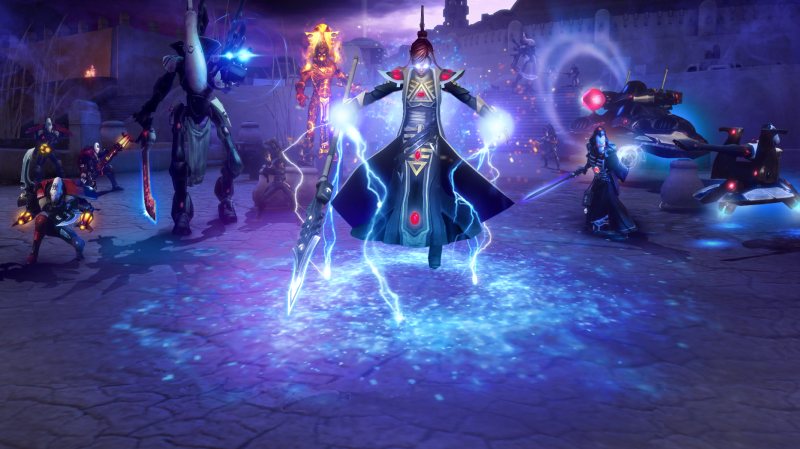







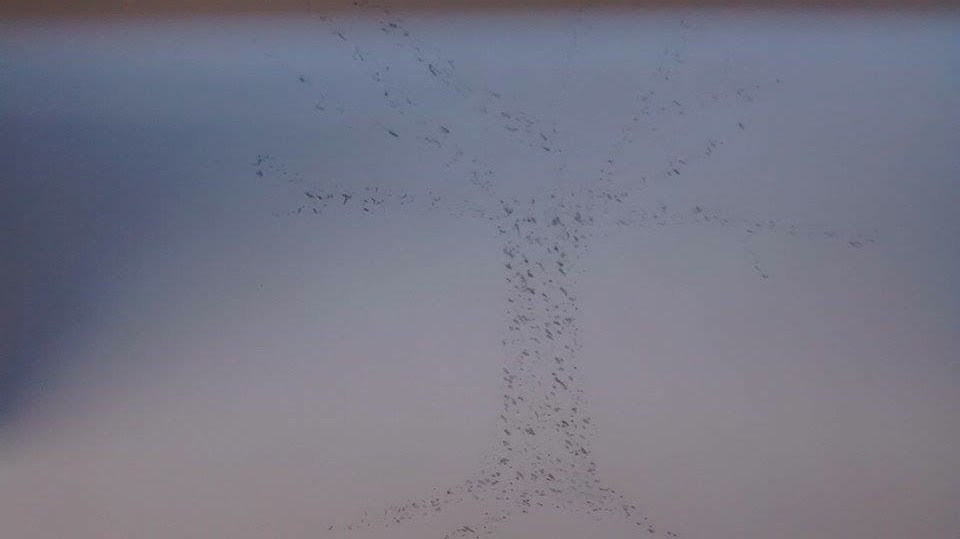


_cover_art.png)

